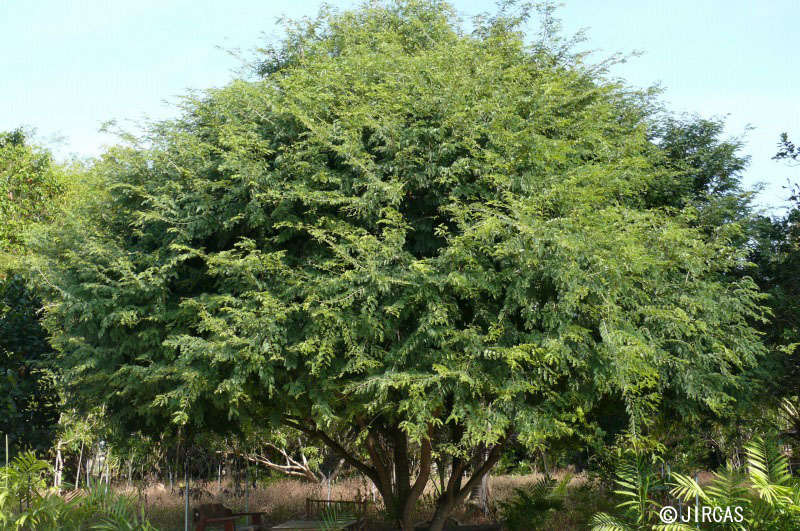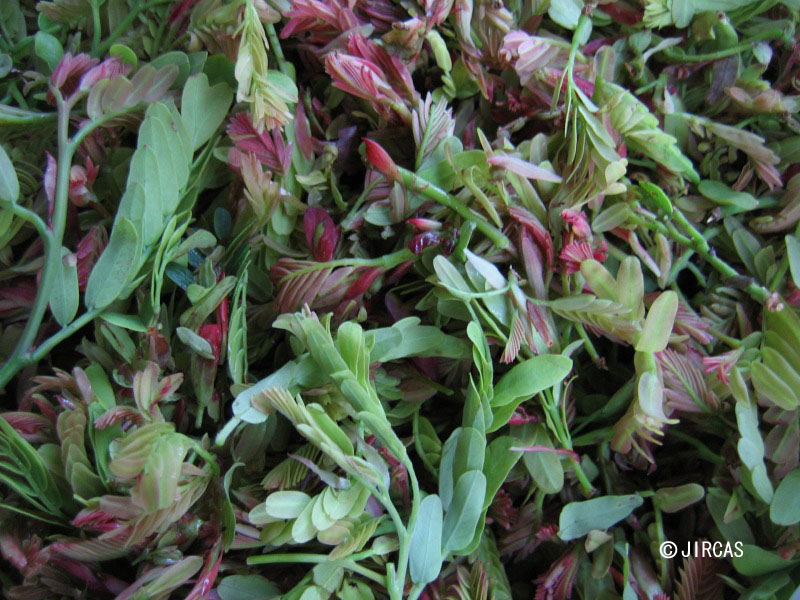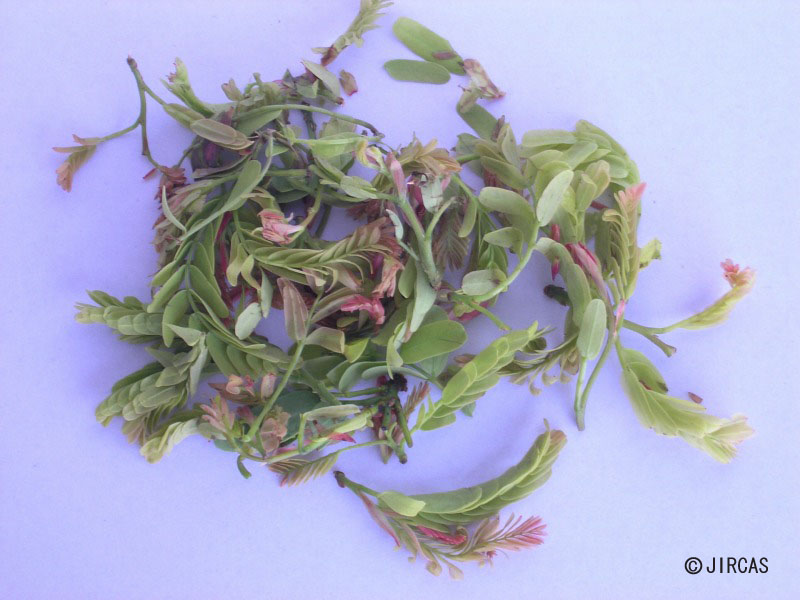Tamarindus indica L. (Fabaceae)
- Scientific name
- Tamarindus indica L.
- Family name
- Fabaceae (Syn. Leguminosae)
- Common name
- Tamarind (English); tamarindo (Japanease)
- Local name
- Ma kham
Evergreen tree, 20–30 m tall, crown densely foliaged, widely spreading, rounded; bark rough, fissured, greyish-brown. Leaves alternate, pinnately compound, stipulate, petiolate; blade c. 15 × 3 cm, with 10–20 pairs of leaflets; leaflets narrowly oblong, entire, oblique, rounded at base to slightly emarginated at apex. Inflorescence lateral and terminal racemes, slightly fragrant, cream-coloured with brownish-red veins. Sepals 4, unequal. Petals 5, posterior and lateral large and showy, anterior much reduced, linear. Fruit an indehiscent pod with rounded ends, subcylindrical, straight or curved, seeds up to 10, more or less constricted between seeds; exocarp hard, greyish or brown, containing strong fibrous threads; mesocarp sticky, blackish-brown when ripe. Seeds irregularly shaped, flattened, rhomboidal, brown to dark brown.
Originating from Africa, this tree is commonly grown for its edible fruits. However, seedlings are also cultivated year-round for young shoots; these are propagated by direct seeding with close spacing.
Young shoots and flowers are eaten as vegetables, adding a sour flavour to many curries, as well as the spicy salad saa yod makham in northern Thailand. It is available year round.
Young shoots and flowers are eaten as vegetables, adding a sour flavour to many curries, as well as the spicy salad saa yod makham in northern Thailand. It is available year round.






